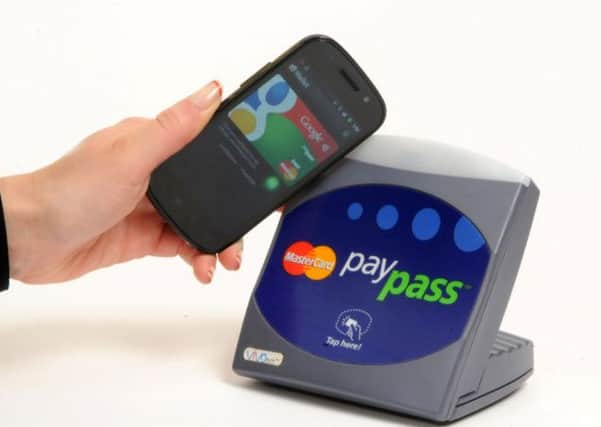Tech Talk: Wireless and peerless


We’ve made some progress in the office, with email eating into the mountain of A4 we used to consume, but the home is another matter. Pressing a button to close the curtains or remotely dim the lights is still something that happens only in 007 movies.
However, an emerging technology called Near Field Communication, or NFC, could make James Bonds of us all. It’s built into most new mobile phones and its principal use is to facilitate easier bank payments at checkouts. The idea is that you simply wave your phone in front of a scanner.
Advertisement
Hide AdAdvertisement
Hide AdBut NFC has other tricks up its sleeve, and the most interesting of these is the ability to be triggered by little plastic tags secreted around your home. You buy the tags in packs of a dozen and then use an app to programme them to your liking. You could, for instance, use your phone to unlock your front door, turn up the central heating or allow visitors automatic access to your wifi when they enter your home. A tag on your car’s dashboard could turn on bluetooth and put your phone into car mode every time you get into the driving seat.
Bluetooth, of course, is also a wireless technology, but NFC is different because its range is limited to just a few inches – so transactions are always personal, never broadcast. For this reason, NFC is becoming the tool of choice for the advertising industry, which can incorporate triggers into posters and shop displays, to send adverts and movie trailers in your direction, if you want them.
It’s also ideal for public transport systems. Londoners are already used to waving their Oyster cards in front of a scanner, and there are plans to let them do the same with their NFC-enabled phones.
Much of NEC’s functionality can be replicated with other, more traditional methods, in some cases simple timers – but it does simplify and speed up many day-to-day tasks. Swapping business cards or music tracks between phones, for instance, takes just a few seconds – because unlike bluetooth you can leave NFC switched on permanently without seriously compromising your battery life.
The rate at which it has been adopted by the mobile industry suggests that it’s more than a passing fad. Only time will tell if we will embrace it for more than just marketing.